Earning Passive Income with BTC: Top 7 Platforms

Bitcoin stands strong as a prime asset for long-term investment, but it also offers passive income opportunities on various platforms.
Often, passive crypto income is associated with staking, a process similar to mining. Rather than requiring hardware operation to validate transactions, staking mandates users to hold and lock a certain quantity of cryptocurrency in a smart contract.
Some platforms reference BTC earnings as “staking,” but this approach doesn't adhere to the Proof-of-Stake algorithm. Currently, various platforms propose ways to place Bitcoin and earn yearly interest:
- Lending Protocols: A portion of users provisionally offers their BTC. In contrast, others borrow it, depositing other cryptocurrencies as security and remitting a specified interest.
- Centralized and Decentralized Exchanges: You can generate returns on your BTC holdings through farming programs, which compensate users with fees for holding BTC.
- Derivative Protocols: BTC acts as collateral for traders, allowing them to use the leverage provided by the platform.
Let's explore seven such applications that propose passive BTC income opportunities, shedding light on their potential annual returns, benefits, and inherent risks.
Lends
Lends is a cryptocurrency lending protocol, part of the broader THORChain crypto ecosystem, anchored by its native token, RUNE. The project offers:
- Decentralized BTC deposits directly from a user's wallet.
- An option to hold Bitcoin in a solo pool, negating the need for another trading pair asset.
- Up to 6% annual returns.
All Lends pools are backed by excess collateral, ensuring it's typically 2–3 times the total borrowed amount, safeguarding against asset depreciation.
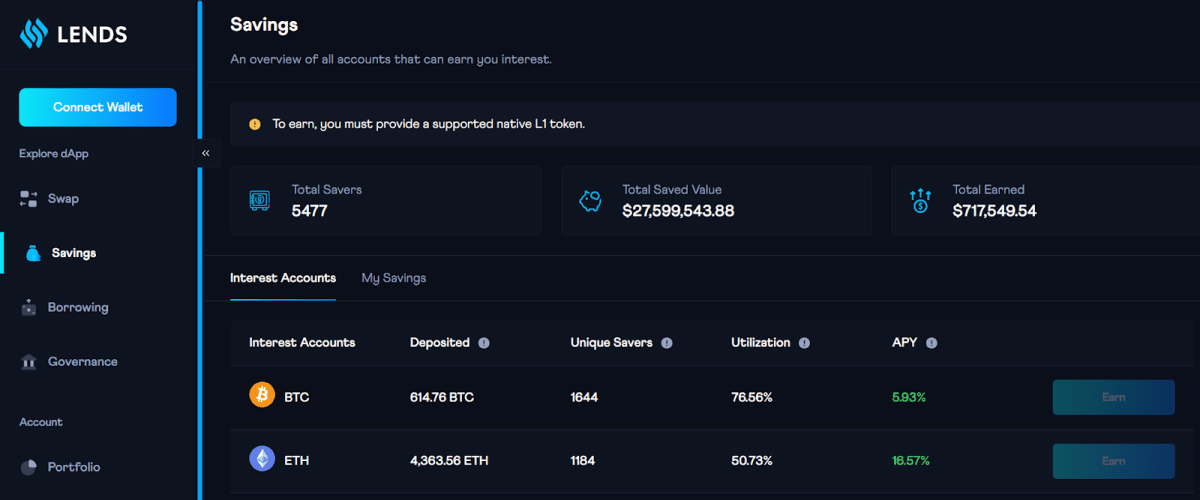
Lends homepage. Source: app.lends.so
Trader Joe
Trader Joe operates as a decentralized exchange on the Avalanche blockchain and is compatible with several other EVM networks. For an in-depth understanding of this project and its unique offerings, consider diving into our detailed review. Here's what you need to know about earning passive BTC income on Trader Joe:
- Earn up to 45% annually.
- Users can establish their own liquidity pool.
- Most BTCs on the platform are in the form of wrapped tokens, essentially synthetic assets from various DeFi projects.
- To farm BTC, it must be paired with another digital asset.
For stability, consider pools paired with stablecoins or ETH, especially during volatile market periods.
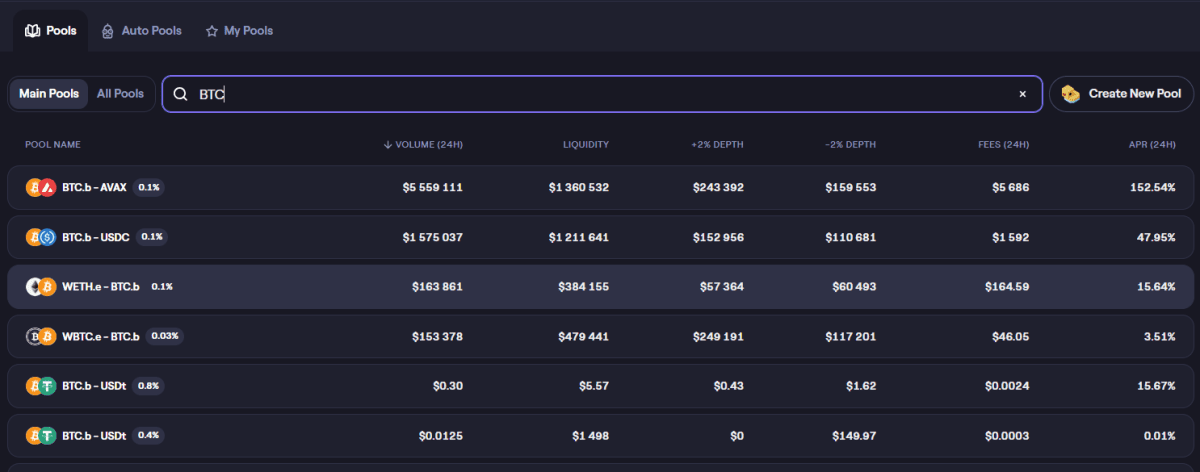
Interface for liquidity pools on Trader Joe. Source: traderjoexyz.com
Quickswap
Quickswap is a decentralized platform rooted in the Polygon blockchain, extending its reach to the emerging Polygon zkEVM network. Its notable advantage is the cost-effective transaction process, particularly beneficial for frequent DeFi interactions.
Here's what's on offer when farming BTC on Quickswap:
- BTC must be farmed in conjunction with other tokens.
- Substantial annual yield, reaching up to 24%.
- The platform features the wrapped Bitcoin, or WBTC, within its liquidity pools.
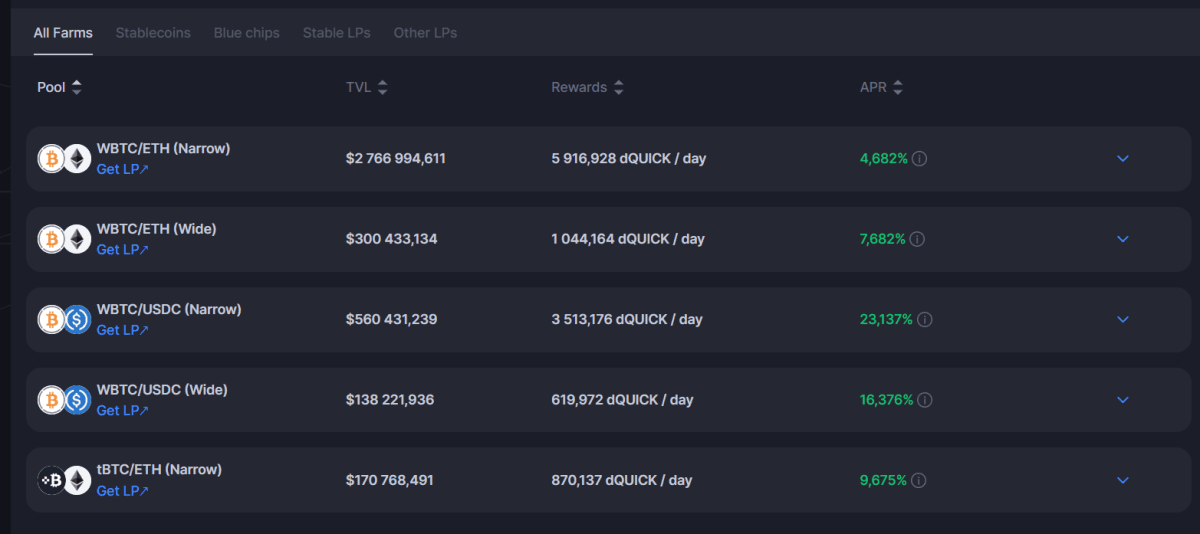
Liquidity farming pools for BTC on Quickswap. Source: Quickswap.exchange
WhiteBIT
WhiteBIT is a prominent centralized cryptocurrency exchange that offers spot, margin, and futures trading. As of the latest data from CoinGecko, the exchange has a daily trading volume of $470 million, securing its position as the 21st top centralized crypto platform.
Engaging in passive BTC income on WhiteBIT entails:
- Assets are locked for a defined period, with rewards disbursed at the deposit's culmination.
- Staking spans from a short 10 days to an extensive year.
- Annual returns can reach up to 17%. The longer the lock-up period, the greater the reward.
- Users can unstake their BTC at any time.
- BTC can be stored in designated pools.
However, users should be aware of standard risks associated with centralized platforms, including potential cybersecurity threats.

WhiteBIT's crypto deposit program details. Source: whitebit.com
PancakeSwap
PancakeSwap, a DEX on BSC, also extends its presence across various networks like Aptos, Arbitrum, zkSync Era, Base, and Polygon zkEVM. The platform is predominantly farming-centric, but with yield rates diverging across networks, users have the luxury to pick the most rewarding blockchain.
Engaging with PancakeSwap offers:
- Utilizes the wrapped Bitcoin (WBTC).
- Minimal network fees.
- Up to 23% annual yields.
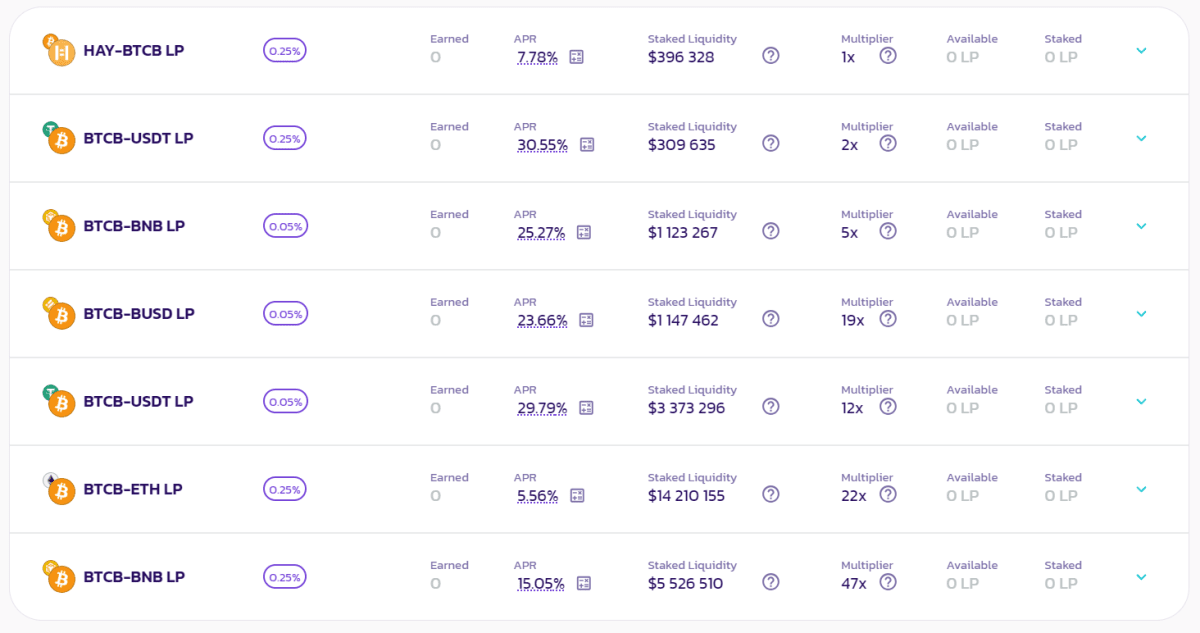
BTC liquidity pools on PancakeSwap. Source: pancakeswap.finance
Syncswap
Syncswap, a decentralized project, has a footprint across the zkSync, Scroll, Linea, and Ethereum frameworks. The platform is on many radars owing to potential airdrops, both from zkSync and potentially from Syncswap upon the launch of its native token.
Key features of Syncswap:
- Earn up to 9% annually.
- Employs the wrapped Bitcoin (WBTC).
- BTC must be paired with another asset in liquidity pools, such as ETH or USDT.
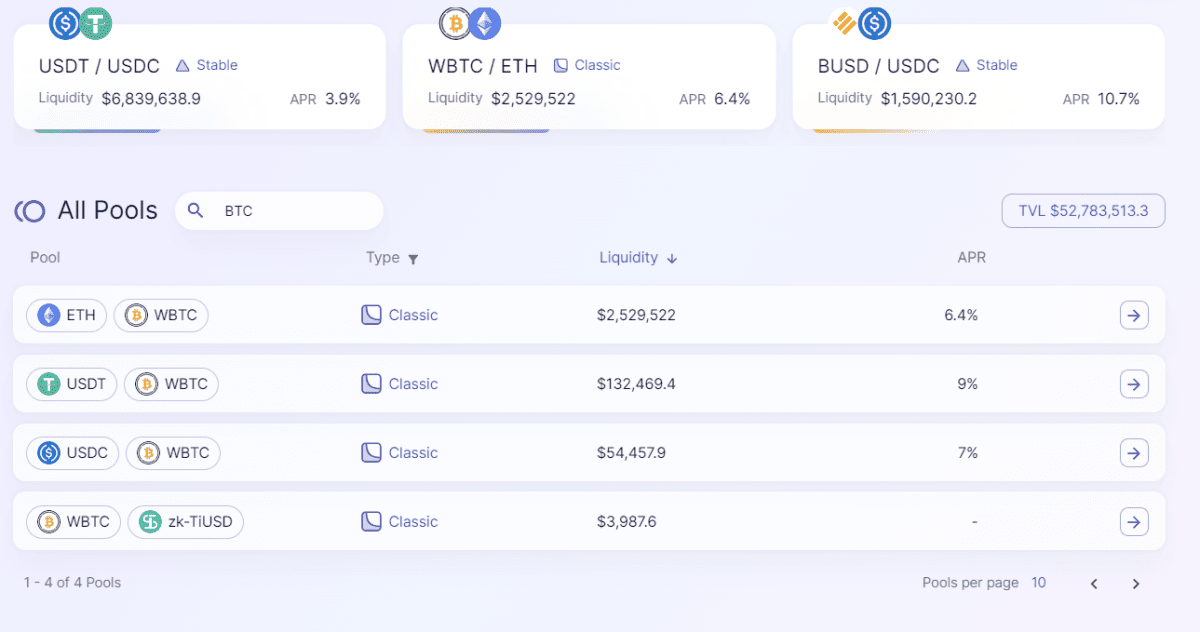
BTC liquidity pools on Syncswap. Source: Syncswap.xyz
GMX
GMX operates as a derivatives futures platform on the Arbitrum blockchain. Users on GMX can borrow assets and apply leverage for their transactions.
Passive BTC income opportunities on GMX:
- Potential returns of up to 12% annually.
- Opportunity to farm BTC in tandem with USD.
- Benefit from reduced transaction fees and swift transaction processing.

Liquidity pools and their prospective yields on GMX. Source: app.gmx.io
Guidelines and Disclaimer
The yield percentages for BTC, whether from farming or simply holding, tend to be dynamic. They vary based on factors such as user engagement, liquidity, and other market conditions. A prudent approach is periodically reviewing BTC holdings and realigning funds across different platforms for optimized returns.
Here are some additional strategies to optimize BTC investments:
- Monitor Yields: Keep an eye on the yield rates, especially if the protocol operates across multiple networks.
- Check Liquidity: A higher locked-in fund volume in a trading pair generally indicates stronger user trust and overall reputation of the DeFi platform.
- Stay Updated: Always remain informed about market conditions. In volatile situations, you might need to make quick decisions like withdrawing BTC. It's essential to monitor platform stats and stay on top of developments.
- Low Fee Networks: Opt for platforms that offer minimal transaction fees. High costs can often offset any gains from the DeFi platform.
- Diversification: Spread your assets across multiple platforms.
Recommended

